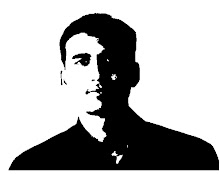Friday, March 5, 2010
Methods of Design Research
2. Literature Survey/ Literature Searches
3. Searching for Visual Inconsistencies
4. Interviewing Users/Personal Interviews
5. Investigating User Behavior
6. Focus Groups
7. Telephone Surveys
8. Email/Internet/Mail Surveys
9. Questionnaire
10. Ethnography
Stating Objectives
Aims :
To identify external conditions with which the design must be compatible
Literature Survey
Aims :
To find published information that can favorably influence the designer’s output and
that can be obtained without unacceptable cost and delay.
Searching for Visual Inconsistencies
Aims :
To find directions in which to search for design improvement
Interviewing Users
Aims :
To get information that is known only to the users of the product or system..
Questionnaires
Aims :
To collect usable information from members of large Population
Investigating User Behaviour
Aims :
To explore user behaviour patterns and to predict the performance limits of potential
users of new design
Internet /Email/ Mail Surveys
Aims :
To collect usable information from members of large Population through communication mediums –Internet, Emails or Mail/Postal Survey.
Telephone Surveys
Aims :
To collect usable information from members of large Population through Telephones/Mobile
Focus Groups
Aims :
To explore people’s ideas and attitudes for small group of people.
Ethnography
Aims :
To provide descriptions of human societies, which as a methodology does not
prescribe any particular method (e.g. observation, interview, questionnaire), but
instead prescribes the nature of the study (i.e. to describe people through writing).
type of study is also be called a "field study” or a "case report“.
Monday, March 1, 2010
What is Design Methodology?
Methods are merely technical rules, which lay down the procedures for how reliable and objective knowledge can be obtained.
Thus methods put down the procedures for constructing a hypothesis (methods of research enquiry), for designing a questionnaire, conducting an interview or doing participant observation (methods of data collection), for working out some statistical formulae or for using computer packages to analyse quantitative or qualitative data (methods of data analysis). If 'methods' are technical rules that define proper procedures, 'methodology' is the broad theoretical and philosophical framework into which these procedural rules fit. It is because these procedural rules reflect broader theoretical and philosophical ideas about the nature of knowledge, explanation and science that the research community gives them authority to endow knowledge as reliable and objective.

Components of Design Methodology
The key to Design Methodology is finding the best solution for each design situation, whether it be in industrial design, architecture or technology. Design Methodology stresses the use of brainstorming to encourage innovative ideas and collaborative thinking to work through each idea and arrive at the best solution. Meeting the needs and wants of the end user is the most critical concern. Design Methodology also employs basic research methods, such as analysis and testing.
Design Methodology in Technology
While Design Methodology is employed in many industries, it is commonly applied in technology fields, including those using the Internet, software and information systems development. Several Design Methodology approaches have developed in the technology industry. Each was a reaction to a different type of problem. Some common technology Design Methodologies include:
- Top Down Design or Stepwise Refinement: This starts from the end solution and works backwards, refining each step along the way.
- Bottom Up Design: This Design Methodology starts with a foundation and works up towards a solution.
- Structured Design: This is an industry standard. The technique starts by identifying inputs and desired outputs to create a graphical representation.
- Structured Analysis and Design Technique: This approach utilizes a diagram to describe the hierarchy of a system's functions.
- Data Structured Systems Development: Data structure determines the system structure in this Design Methodology.
- Object Oriented Design: This methodology is based on a system of interacting objects.
What is Design?

DESIGN is a creative activity, whose aim is to establish the multi-faceted qualities of objects, processes, services and their systems in whole life cycles. Therefore, design is the central factor of innovative humanization of technologies and the crucial factor of cultural and economic exchange
Design learning involves Learning to
• initiate, guide and manage intention; • access and develop relevant information; • develop and analyze conjectural models; • interactively resolve and communicate responses to situations; • act on proposed responses efficiently; • assess success in terms of intention; and • acquire and adapt knowledge for future use. - Dr Charles Burnette
Thus Design is about possibilities, which means exploring area of design intervention using design research and design methodology for opportunities which are unexplored. Designer has to expand his horizon by learning ethnography research, observation, questionnaire, feedback, QFD, literature survey and books to arrive at design brief and synthesis.
